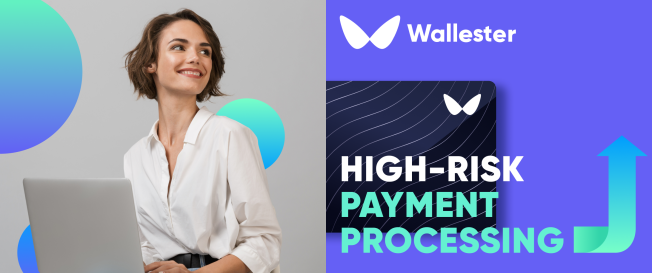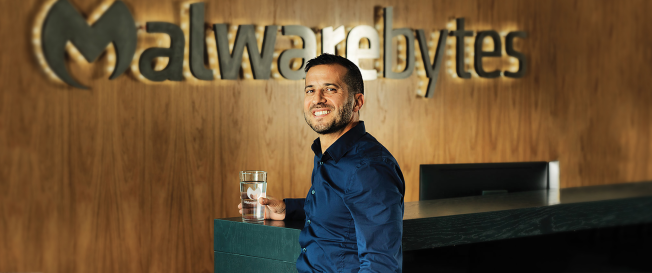Since the 1990s, when the world started embracing electronic banking, it has become the preferred means of transaction. Today, more businesses get paid electronically than with cash, and consumers prefer to go cashless than carry money around. This has given birth to different payment gateways and cryptocurrencies.
Therefore, businesses that want a more expansive reach online and in physical stores must use a payment gateway. However, you must have a merchant account to use a payment gateway. But not all companies are allowed to open a merchant account due to the high safety risk associated with their business and the number of chargebacks they get.
This article examines what a high-risk payment processing/merchant account means and the businesses needing one. It also covers essential gateway features and how to find a high-risk payment processor.
What Is a High-Risk Merchant Account?
High-risk merchant accounts belong to businesses with a significant likelihood of getting chargebacks after a transaction. It also includes enterprises where client payment details have an increased risk of exposure. Additionally, a business with a heightened likelihood of fraud would be marked as high risk.
However, these are not the only factors that make a merchant account high risk. Companies in high-risk industries will have their payment gateway marked. Also, if you are a new business without credibility, your payment process provider will label you a high risk.
Do I Need a High-Risk Merchant Account?
The answer to this question depends on the industry you belong to and your creditworthiness. You don’t need a high-risk merchant account if your business belongs to a low-risk sector. Industries with low risk are manufacturing, technology, trade, production, finance, investment, tertiary institutions, etc.
On the other hand, you need a high-risk merchant account if your business is considered high-risk. This means some merchant account providers see you as a credit risk and are unwilling to allow you to use their payment gateway. If this happens, you will be unable to accept card payments.
This is detrimental to a business, especially if it is an e-commerce store or has most of its services online. Also, high-risk accounts have higher chargeback fees, which means your business will pay more than those with low-risk accounts. Depending on your secure payment gateway provider, You might pay to double the chargeback fee for low-risk merchants.
Furthermore, businesses using a high-risk payment processor might feel obligated to sign longer-term contracts. Merchant account providers could ask you to pay an early termination fee, higher transaction fees, or monthly fees. In addition, your business account might be subject to a rolling reserve.
A rolling reserve is a system where high-risk merchant account providers withhold a percentage of your money. They will keep the funds until they confirm there is no risk of a chargeback or that a transaction was not fraudulent.
Indeed, the terms of having a high-risk merchant account are unfavourable to the business owner. However, if your business falls within an industry with high-risk factors, and you want to start accepting payments with cards or online, you have little choice but to accept the terms. If not, you have to look for alternative payment methods.
How Are Businesses Assessed as High-Risk?
There are factors that financial institutions providing credit card services consider before tagging a business as high-risk. However, note that the elements vary between merchant account providers. But generally, the following are ways of determining if an enterprise is high-risk:
The Number of Transactions
Interestingly, the more transactions you conduct, your business will likely be considered high-risk. This will be the case if your average transaction rate is massive. So, suppose you process more than $20,000 in transactions monthly or an average of $500. Then your business will be deemed high-risk.
Allowing International Payments
Payment gateway providers will mark you as a high-risk business if you accept international payments from countries known for cybersecurity issues and fraudulent transactions.
No Prior Merchant Account
A business is also considered high-risk if opening a merchant account for the first time. This falls under reputational risk, meaning you have never operated a payment gateway and have no track record. As a result, owners of payment gateways don’t know if they can trust you.
Belonging to a High-Risk Sector
Again, being part of an industry that merchant account providers consider risky makes your business a high risk. If you are part of the subscription-based industry, your company is a high-risk venture. This is primarily because people who visit your platform sign up for free trials and never go through with their payments. Others forget to cancel their income, which results in chargebacks.
Credit Risk
Finally, you will be classified as high-risk if you have a low credit score.
Examples of High-Risk Business Sectors?
The following are examples of high-risk merchant services:
Online Gaming
Playing games online comes with several uncertainties which scare financial institutions away. Also, online gaming processors get many chargebacks and refunds and always record voluminous transactions. As such, it is unpredictable.
Additionally, online gaming platforms face legal restrictions in different countries and are easy prey for fraudulent people. Finally, getting payments from other countries and operating offshore merchant accounts makes it hard to track online gaming transactions, a risk financial institutions don’t want to take.
Debt Collection
This is one of the businesses tagged as high-risk. The debt collection industry is riskier than most sectors due to the astronomical number of chargebacks and regulatory issues. Also, many debt-collection companies operate multiple merchant accounts — domestic and offshore — which is a red flag for many payment gateway providers.
Adult Entertainment
Adult entertainment is a controversial industry and a complex business model subject to stricter rules and regulations than most sectors. Most financial institutions, especially those run by conservatives, are concerned about how being linked to such a superficial industry affects them.
Also, like other high-risk companies, adult entertainment businesses frequently deal with many fraudulent transactions and chargebacks. It also doesn’t help that they handle large international payments for their products, render per minute, subscription services, and have recurring payments.
How Do High-Risk Accounts Differ From Regular Accounts for Payment Processors?
A regular account in this context is a standard merchant account. They are given to businesses seen as low risk and subject to lesser charges and rules. This section looks at how high-risk accounts differ from regular payment processor accounts.
Longer Application Process
The first difference between high and low-risk merchant accounts is the application process. As you’d already guessed, high-risk merchant accounts take longer to open. The merchant account provider will carefully study your business information and risk profile.
They will analyse your monthly transactions to see if they exceed $20,000 or an average of $500. Additionally, the payment processor provider will examine your financial record to see the number of chargebacks recorded monthly. Some providers will ask for your personal credit history and local and international partnerships.
Note that different merchant account providers have additional requirements during the application process. As such, the timeline for the application might differ from one financial institution to the next.
Cash Reserve Requirements
High-risk payment gateway providers often require high-risk businesses to have cash reserves before they approve them. A cash reserve is a money kept aside for short-term or emergency needs. Generally, the high-risk payment processor provider will require three types of cash reserve:
- Upfront Reserve: The merchant account provider asks the business owner to pay a certain amount upfront. Depending on the agreement between both parties, the financial institution might keep the money from the transactions the company records for a month until they pay the agreed-upon amount.
- Capped Reserve: The business owner and the merchant account provider agree to a predetermined sum for limited reserve. However, unlike an upfront budget, you don’t have to pay upfront. Instead, the processor takes the money on a per-transaction basis and keeps doing so until they have the agreed amount.
- Rolling Reserve: As mentioned earlier, merchant account processors take a percentage of every processed transaction until they confirm there will be no chargeback or incidence of fraud. Depending on the agreement, the amount could be anything from 10% or more.
However, unlike upfront and capped reserves, you can get the money back once the rolling period ends. This could be from four months to a year.
Higher Chargeback Fees
Chargebacks are the bane of high-risk companies. Usually, the payment processor provider takes chargeback fees every time they process refunds. The more chargebacks your business has, the more you’ll pay.
Depending on the processor, the amount could range from $20 to $100 per transaction. When you multiply this amount by the number of payments you process monthly, it adds up to a sizable sum.
Volume Caps in Credit Card Processing
As mentioned, having high volume transactions makes your business an increased risk. Therefore, to protect their interest, the financial institution providing merchant services will place a limit on your card payments. They do this to limit the risk posed by voluminous transactions.
Additional Requirements
Your business type, stability, safety tool, and the scrutiny it faces from banks and the government will determine if your high-risk merchant account provider will have other conditions. For example, the payment processor provider may ask you to invest in chargeback prevention tools. If you don’t, they might not grant you a merchant account.
Important Payment Gateway Features
When choosing a high-risk payment processor, you must ensure it offers the best features. Considering the stringent and lengthy application process and the extra charges you’ll pay, it’s only fair that you get the worth of your money.
So, what payment gateway features should you watch for? Here are the three crucial ones:
Freedom of Choice
A business owner should be able to choose the types of payments to accept and reject. Therefore, choose a payment gateway partner that allows you freedom of choice. Also, work with a merchant account provider that knows and understands the industry you belong to. Not one that will be quick to freeze your merchant account, which will affect your business operations.
Easy Management
Payment gateways should be easy to manage and not clunky. Also, it should have seamless integration with different plugins on your website. Efficient payment gateways save time and reduce the chances of making errors.
Tokenisation
Security is a primary concern of high-risk merchant account providers. Interestingly, your customers are also concerned about their debit or credit card information. Thankfully, tokenisation came to the rescue.
Tokenisation involves switching financial information with a randomly generated code known as a token. When choosing a high-risk merchant account provider, ensure you use one that supports using tokens. With tokenisation, customers don’t have to use their credit card PAN (primary account number). As such, they will have better data protection and increased trust between you and them.
Additional Core Payment Gateway Solutions for Your Merchants
If you are a merchant account provider offering payment processors to industries with a higher risk of fraud and chargebacks, this section is for you. Agreeing to use a high-risk payment processor means your merchants will pay higher fees and meet all your requirements. Therefore, it is only prudent to provide services that benefit them and their business.
The following are core payment solutions to provide for merchants.
Accept Multiple Currencies
Payment gateway providers for high-risk businesses should allow merchants to accept payment in diverse currencies. This is one of the reasons why they are marked high-risk, so it is fair they can get paid from different parts of the world when using a high-risk merchant account. So, suppose a customer pays in pounds, and the merchant operates a business in a country that uses dollars.
The merchant should be able to withdraw the money in pounds without converting it to dollars first. Multiple currency payment gateways make it easier for businesses to get paid by their international customers and expand their services to those outside their region.
Additionally, payment gateways that accept different currencies help businesses improve customer experience and are more cost-effective. For example, withdrawing money in the currency a client pays reduces foreign currency transaction fees. In some countries, it eliminates it.
Take All Major Payment Types
There are different types of digital payments, from debit and credit cards, wallets, and rewards, to cryptocurrency. Therefore, your payment gateway should be able to take them all. If you take all payment types, the merchant can ask their customers to pay using their preferred medium. So, enable payment types like PayPal, Stripe, Apple Pay, and virtual cards.
Virtual Terminal
Virtual terminals allow merchants to collect credit and debit card payments through a secure web page. They are used instead of point-of-sale (POS) machines, and anyone with a smartphone or computer can pay for goods and services without a physical card.
Providing a payment terminal for high-risk businesses means their customers can securely transact online from wherever they are. However, the merchant and the payment processor provider must give extra layers of security to avoid/reduce fraud.
Recurring Billing
A recurring payment gateway is where a merchant can deduct a fixed amount from their customer’s account at regular intervals. This is usually every month. High-risk businesses who want to have uninterrupted cash flow use recurring billing.
Merchant account providers who cater to such enterprises must provide this billing system. By giving merchants this option, they can ensure their customers can subscribe to their services monthly. Some top recurring billing virtual terminals are Stripe, Braintree, FreshBooks, Recurly, and PayPal.
QR Codes
Finally, another solution that high-risk merchant account providers can give businesses with high-risk merchant accounts is a QR (quick response) code. A QR code differs from a barcode; it stores more data per unit area than the latter. These days, online shoppers can scan QR codes using their phones. Hence merchants are using it as a means of accepting payment.
To pay with a QR code, the user will open the payment processor app once their purchase has been totalled in the merchant’s POS system. The app will display a QR code correlating with the user’s debit or credit card details. Afterwards, the merchant will scan the QR code to get paid and conclude the transaction.
QR codes are becoming a trend because they enable quick payments and are safer than most payment gateway options. This is because the information shared through the QR code is encrypted. Therefore, QR codes are a great payment solution for high-risk businesses as it enables safer transactions.
How to Find a High-Risk Merchant Services Provider
How do you find a high-risk merchant service provider? Are there criteria to look for? If yes, what are they? This section discusses discovering and choosing the best high-risk merchant account provider.
First, ask yourself if the payment processor provider offers customised solutions. No two high-risk businesses are the same, even if they belong to the same industry. Therefore, the merchant account provider must cater to your unique needs.
For instance, the payment processor must fit your online sales process and the acceptable payment types. Also, the secure payment gateway processor should streamline your website checkout process, making it easy and fast.
Secondly, the payment gateway provider should be able to handle high sales volume. An unmistakable feature of high-risk businesses is massive sales. So you need a provider to manage huge transactions and grow with you.
If a merchant account provider does not have room for growth, it’s better not to enter a long-term contract with them. If you do and the gateway provider can’t keep up, it will affect your business growth.
Thirdly, look for merchant account providers that offer a 3D secure payment gateway. Also, ask about their other security features and any added elements for enhanced protection.
Fourthly, you must remember customer service. Excellent customer service relations are crucial. The financial institution should have a team ready to onboard and assist you whenever you hit a snag with the payment gateway. If you sense a merchant account provider ignores their clients, it’s better not to go with them.
Once you’ve pinpointed the payment service provider you want to go with, find out the following:
- The provider’s relationship with other businesses in your industry
- The average time it takes to make payments
- Their reserve requirement
- Whether they accept ACH payments and eChecks
- How much do they charge as an early termination fee if you change providers
- The type of POS and virtual terminal they provide
- If the provider offers competitive prices
Conclusion
Being marked as a high-risk business doesn’t mean you can’t get a merchant account, although you face stricter rules and more payments. However, ensure the high-risk merchant account offers the best solutions, and the payment gateway has the features discussed in this article.
We are excited to become your reliable business partner and meet all your needs.
Let’s discuss your business case and how we can be beneficial to you.
Please fill out this form, and our team will contact you.



